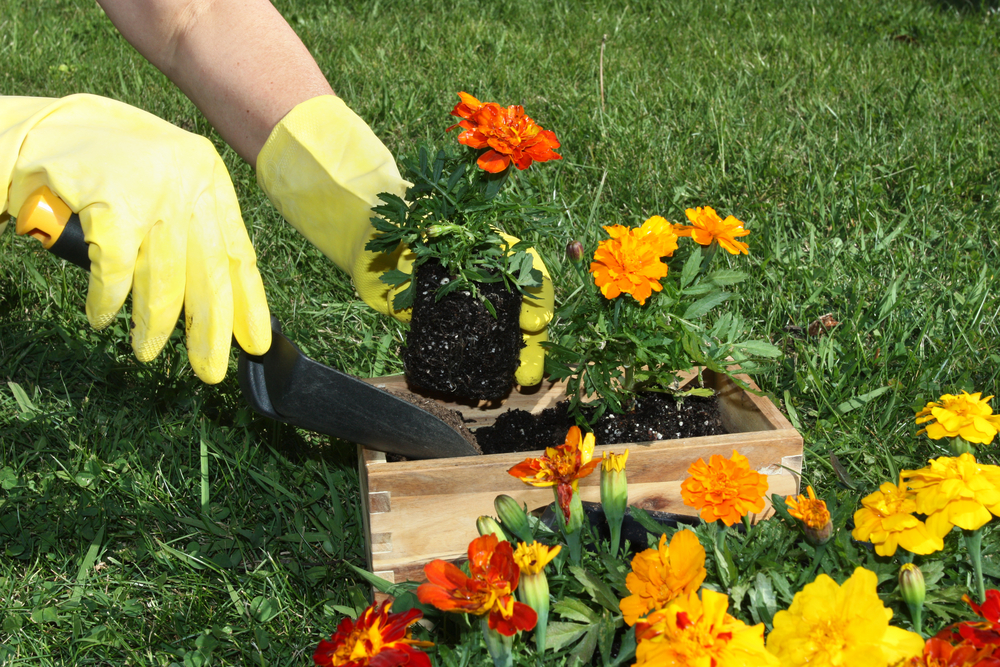Prep your Property for Spring with this Action Plan

As rental markets heat up during spring and summer cycles, a healthy, green landscape can do wonders for attracting new residents.
A lush front lawn or bed of bursting color doesn’t come overnight or only after a few good rains. Getting the landscape in shape takes time, planning and patience - creating a road map for an attractive landscape is necessary long before the grass starts to turn green.
While the last of winter is a good time to do some general leaf cleanup if it already hasn’t been done, it’s also an opportunity to start a month-by-month plan to help the yard reach its optimum potential, says Earthworks DFW President Chris Lee.
It’s important to observe conditions and stay in step with the natural seasonal progression of the region, Lee said. He cautions some green thumbs who may be tantalized into action with recent short-sleeve weather in Texas and other southern regions.
“You need to make sure that the last hard-freeze is over,” he said. “Right now in southern climates we’re seeing some spring-like temperatures. It’s a good time to get started on your landscape, but it’s even more important to do things at the right time.”
Lee says that for many parts of the country, the next three months provide the best opportunity for the landscape to reach its full potential as the growing season ramps up.
Here’s a month-by-month checklist to help your lawn reach its full potential for curb appeal:
February
February is a great time to finish general landscape cleanup and begin making plans for how the property should look during the growing season.
- Get a Plan. Assess the lawn, beds, trees and the general landscape and determine what needs to be cut back, removed, culled and reshaped. Plot a path and follow it.
- Apply pre-emergents. An effective pre-emergent will make the lawn more healthy and weed resistant. In most areas, a pre-emergent fertilizer with time-release action will provide the right amount of nutrients and weed preventatives at the right time.
- Prune and cull. It’s a great time to prune crape myrtles and ornamental trees, plus cull larger grasses.
- Plant spring color. At the end of the month in southern climates start planting colorful annuals in beds. Bright yellows, oranges and reds grab the most attention.
March
As temperatures warm, put your plan for cutbacks and pruning of flowering bushes into action.
- Cut back ground cover and monkey grass. Mow to two-inch height and remove all the brown and dead grass. Failing to cut these plants back will result in plants that don’t look healthy when they should be lush and green.
- Prune roses. Before it gets too hot, prune roses and other flowering bushes. Pruning in March will help these bushes reach their full potential at the height of spring.
- Reduce large shrubs that are overgrown. Make sure bigger shrubs are but back before they start to bud.
- Check the waterworks. Irrigation systems that have been drained should be filled and tested for leaks or problems. Also, check rain sensors.
- Fertilize the lawn. About three or four weeks before lawns typically start to green, apply a fertilizer with high nitrogen.
April
For the southern part of the country, April usually is the final chance to get the lawn in shape before the heat hits. “It’s the Last month you have before you start getting hammered by heat,” Lee said. “It’s then that you’re trying to get things accomplished before the plant goes into survival mode.”
- Plant shrubs, grasses and other new plant life. Do it early so that new plants have enough time to get established before summer arrives.
- Trim trees. Most trees will have leafed out by now and you should be able to tell which limbs may be overly weighted and in need of trimming or cutting.
- Apply pesticides. As temperatures warm, fire ants and aphids start to emerge and should be treated to avoid damage to new and existing growth.
- Mulch beds and other areas. About mid-month, mulching should be under way and even finished. However, make sure the rainy season is mostly finished to avoid washing out of fresh-mulched beds.
“Not all of these steps will be right for areas farther north,” Lee said. “That cycle will probably start in March and run through May, for example. Wherever the property is located, it’s important to take a progressive approach to the landscape so that everything has the greatest chance of flourishing.”
(Photo source: Shutterstock)







